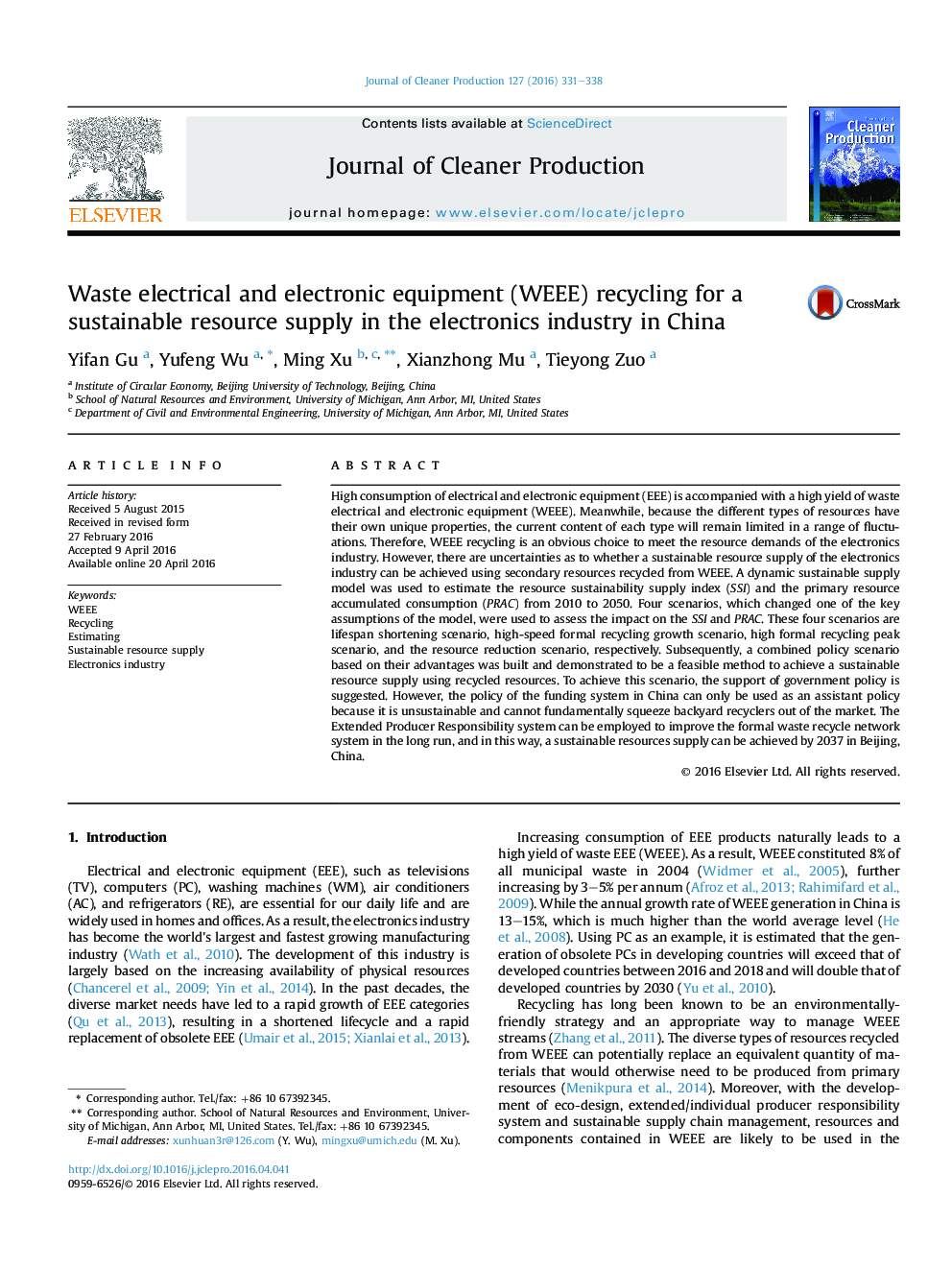| Article ID | Journal | Published Year | Pages | File Type |
|---|---|---|---|---|
| 1744091 | Journal of Cleaner Production | 2016 | 8 Pages |
•WEEE recycling is a choice to meet the resource demand of the electronics industry.•We estimate the sales and the recycled quantity of EEE in Beijing from 2000 to 2050.•Dynamic sustainable supply model was used to measure sustainability resource supply.•EEE lifespan, recycling ratio and resource reduction policy can affect sustainability.•A combined policy is demonstrated to be a feasible method to achieve sustainability.
High consumption of electrical and electronic equipment (EEE) is accompanied with a high yield of waste electrical and electronic equipment (WEEE). Meanwhile, because the different types of resources have their own unique properties, the current content of each type will remain limited in a range of fluctuations. Therefore, WEEE recycling is an obvious choice to meet the resource demands of the electronics industry. However, there are uncertainties as to whether a sustainable resource supply of the electronics industry can be achieved using secondary resources recycled from WEEE. A dynamic sustainable supply model was used to estimate the resource sustainability supply index (SSI) and the primary resource accumulated consumption (PRAC) from 2010 to 2050. Four scenarios, which changed one of the key assumptions of the model, were used to assess the impact on the SSI and PRAC. These four scenarios are lifespan shortening scenario, high-speed formal recycling growth scenario, high formal recycling peak scenario, and the resource reduction scenario, respectively. Subsequently, a combined policy scenario based on their advantages was built and demonstrated to be a feasible method to achieve a sustainable resource supply using recycled resources. To achieve this scenario, the support of government policy is suggested. However, the policy of the funding system in China can only be used as an assistant policy because it is unsustainable and cannot fundamentally squeeze backyard recyclers out of the market. The Extended Producer Responsibility system can be employed to improve the formal waste recycle network system in the long run, and in this way, a sustainable resources supply can be achieved by 2037 in Beijing, China.
Graphical abstractFigure optionsDownload full-size imageDownload as PowerPoint slide
